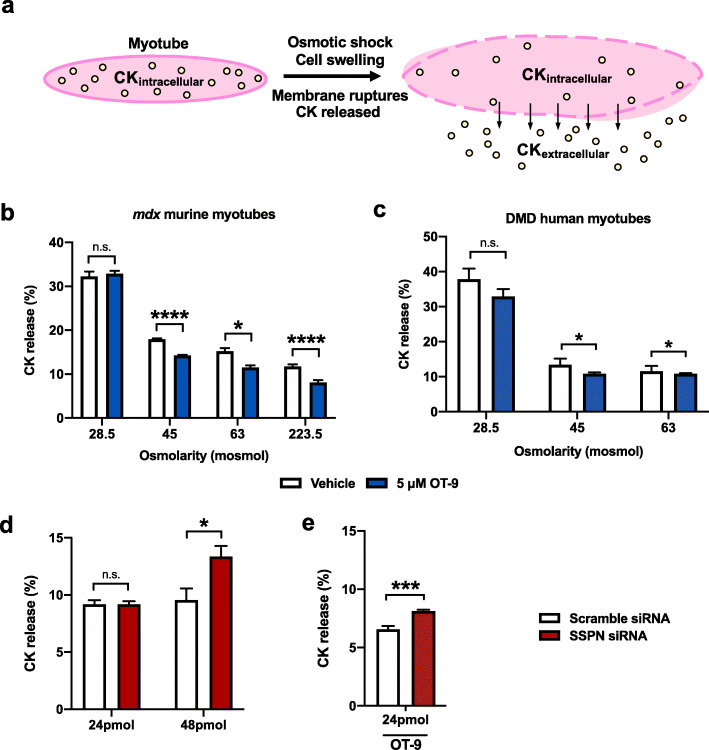Fig. 5.
OT-9 improves membrane stability of dystrophin-deficient myotubes in part through upregulation of sarcospan. a The creatine kinase (CK) release assay entails subjecting myotubes to osmotic shock, which causes cell swelling and membrane damage, allowing for intracellular CK to be released from the cell into the surrounding medium. CK release is calculated by taking the ratio of CKextracellular/(CKextracellular + CKintracellular). Day 2 b mdx and c DMD myotubes treated were treated for 48 h with 5 μM of OT-9 and subjected to osmotic shock with solutions ranging from 28.5 to 224.5 milliosmoles (mosmol). d mdx myotubes were transfected with 24 or 48 nM of scramble siRNA or siRNA targeting sarcospan. After 48 h, myotubes were subjected to osmotic shock with 45 mosmol solutions. The 24 nM SSPN siRNA transfection did not affect CK release relative to scramble control. The 48 nM concentration of sarcospan siRNA increased CK release relative to the scramble control, indicating sarcospan contributes to membrane stability regardless of treatment e mdx myotubes treated in parallel with 24 nM of sarcospan siRNA and 10 μM of OT-9 demonstrate that depletion of sarcospan reduced the ability of OT-9 to improve membrane stability. Data represents mean + SEM. n = 3. SSPN, sarcospan; R.U., relative units. *p < 0.05, **p < 0.01, ***p < 0.001, ****p < 0.0001

